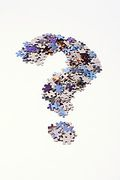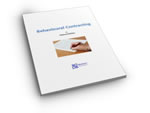 In the 1960s, US psychiatrist Aaron Temkin Beck noticed that his patients tended to engage in ‘internal dialogue’, as if they were talking to themselves. He realised that there was a link between thoughts and feelings and he created the term ‘automatic thoughts’ to describe emotion-flled thoughts that pop up inthe mind. Beck found that people weren’t always fully aware of such thoughts but could learn to identify and report them, and thus overcome their particular difficulties. And so Cognitive Behavioural Therapy (CBT) was born, which would later spawn Cognitive Behavioural Coaching (CBC).
In the 1960s, US psychiatrist Aaron Temkin Beck noticed that his patients tended to engage in ‘internal dialogue’, as if they were talking to themselves. He realised that there was a link between thoughts and feelings and he created the term ‘automatic thoughts’ to describe emotion-flled thoughts that pop up inthe mind. Beck found that people weren’t always fully aware of such thoughts but could learn to identify and report them, and thus overcome their particular difficulties. And so Cognitive Behavioural Therapy (CBT) was born, which would later spawn Cognitive Behavioural Coaching (CBC).
Beck, now a professor in the department of psychiatry at the University of Pennsylvania, is credited as the founding father of CBT (Curwen, Palmer & Ruddell, 2000) but there are a number of other key players who have made their own unique contributions to its theory and practice. These include: Albert Ellis, Maxie C Maultsby, Michael Mahoney, Donald Meichenbaum, Christine Padesky and David Burns.
Originally named ‘cognitive therapy’ because of its emphasis on thinking, it is now known as CBT because it has incorporated behavioural techniques as well. The balance between the cognitive and the behavioural elements varies among the different therapies of this type, but all come under the umbrella term CBT. Since its birth, CBT has undergone successful scientic trials and has been applied to a wide variety of problems.
The National Institute of Clinical Excellence (NICE), an independent organisation responsible for providing national guidance on the promotion of good health and the prevention and treatment of ill health, has developed a series of guidelines. Using the expertise of the NHS, healthcare professionals, patients, industry and the academic world, it has evaluated a number of approaches to the treatment of conditions such as depression, anxiety, Post Traumatic Stress Disorder, eating disorders, Chronic Fatigue Syndrome, Obsessive Compulsive Disorder, sexual dysfunction and self-harming tendencies, and has recommended CBT as either the treatment of choice or main treatment for such conditions.
CBT is based on the theory that it’s not situations that cause distress, but the individual meanings we give to them. If our thoughts are negative, they impede our ability to do those things that challenge what we perceive to be true. Through the process of identifying and re-evaluating self-defeating thinking, an individual is persuaded to engage in more effective ways of thinking and behaving.






